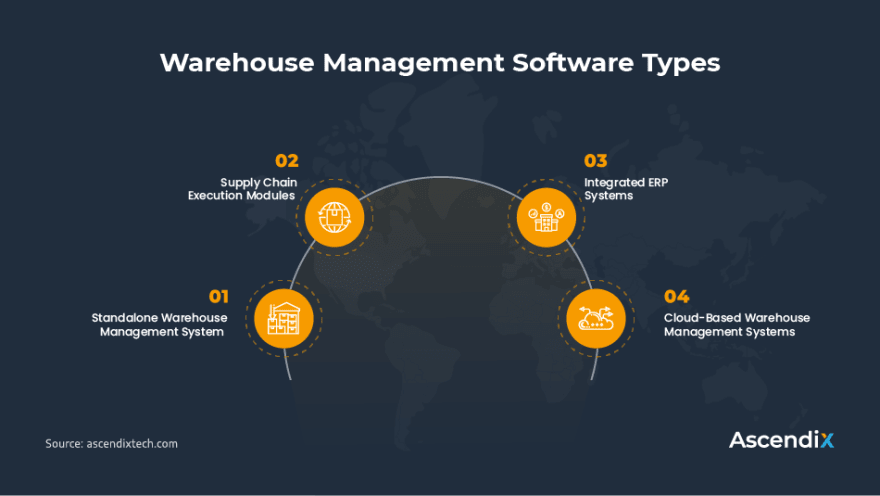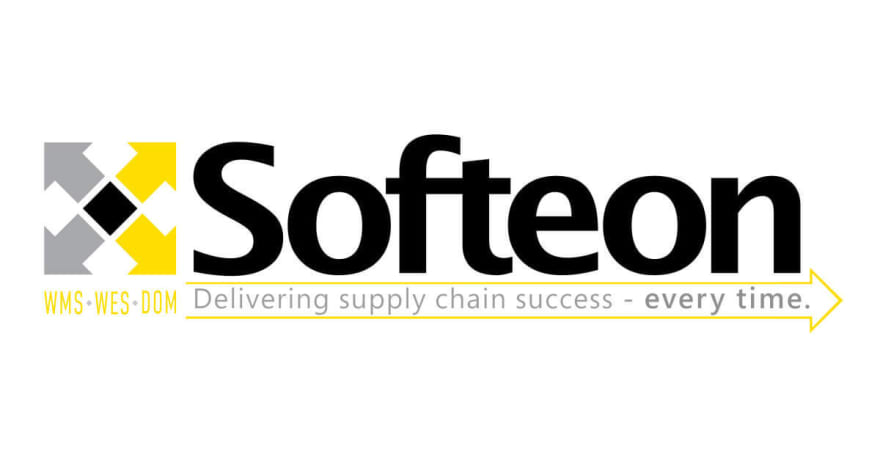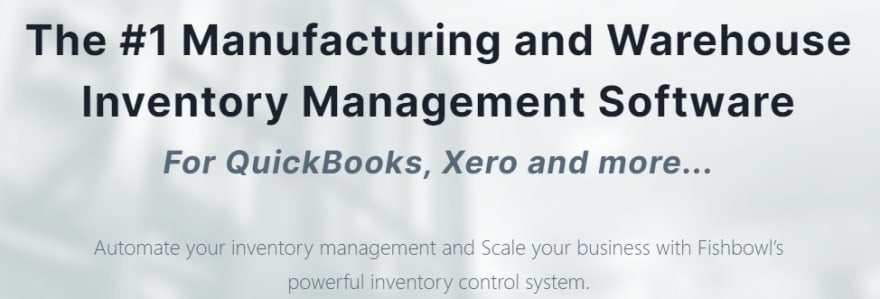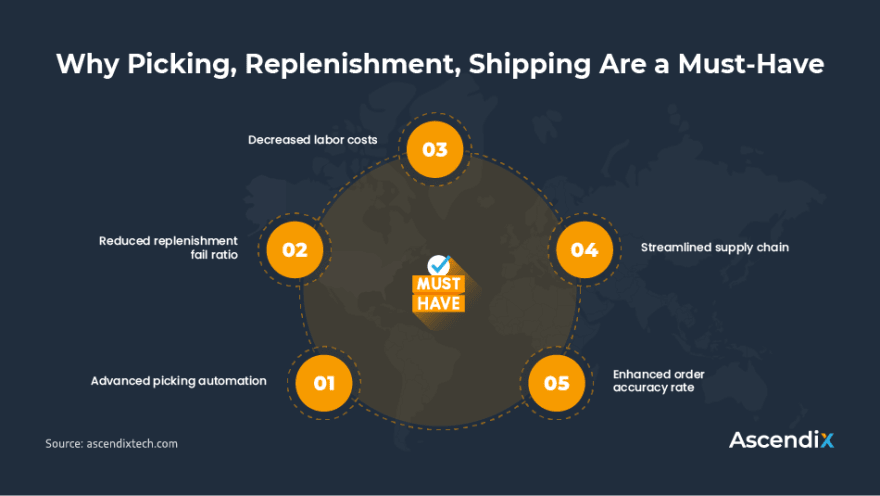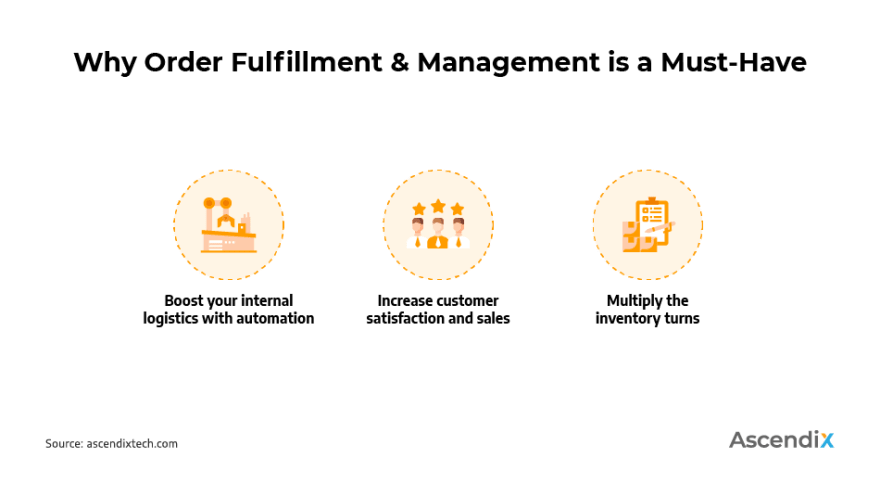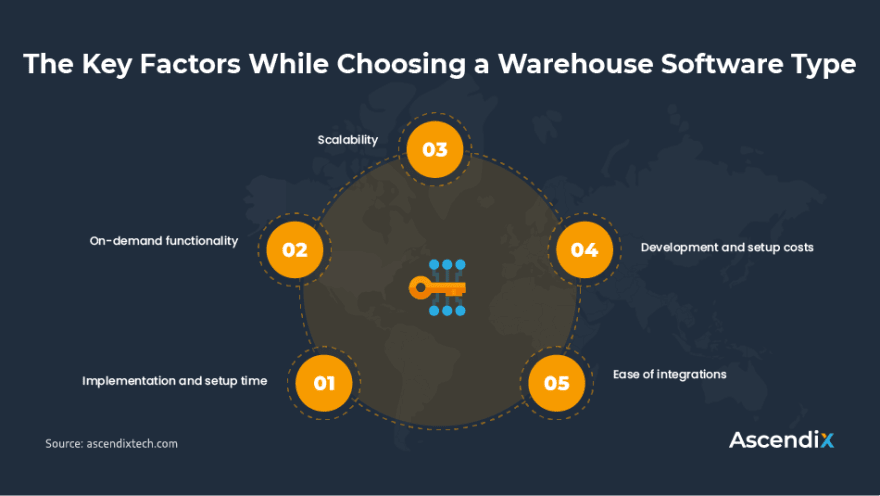This content originally appeared on DEV Community and was authored by AscendixTech
The article was originally published on Ascendix Tech Blog .
Markets and Markets states that the warehouse management software market was valued at $2.4 bln in 2020 and is forecasted to reach over $5 bln by 2025.
So, more and more companies are looking for a custom or out-of-the-box warehouse management software and here the question emerges: ‘how to build a warehouse management system?’
For these reasons, we decided to share the all-inclusive guide on warehouse management software development covering the following aspects:
What is warehouse management software
Warehouse management system market statistics
The core types of warehouse management systems
Key features of warehouse management system
How to build a warehouse management system.
So, let’s get down to business and start with the definition.
What is Warehouse Management System
A warehouse management system is a technology solution designed specifically to help e-commerce and other B2B/B2C businesses automate, optimize, and support internal warehouse workflows and processes.
Warehouse management software empowers entrepreneurs to take an automated control of the entire supply chain management process from receiving to shipping.
What are the key types of warehouse management software (WMS)?
Briefly speaking, there are 4 key types of warehouse management systems that help solve multiple different challenges and tasks depending on specific business demands.
Standalone Warehouse Management System
Supply Chain Execution Modules
Integrated ERP Systems
Cloud-Based Warehouse Management Systems
In the following passages, we will cover the key aspects you should cosnider to answer the question ‘how to choose a warehouse management system’ that will fit your business needs the best way possible.
What are the top WMS software providers?
NetSuite WMS
NetSuite Warehouse Management System is one of the leading WMS software providers offering a cutting-edge web-based product by Oracle.
The software solution was created exactly to assist companies in streamlining and automating warehouse operations from receiving to shipping.
Softeon
Being one of the leading WMS software providers, Softeon offers a warehouse management system designed specifically to help optimize and automate most supply chain operations from receiving to shipping.
The company offers both a web-based cloud solution and on-premises deployment system up to your challenges and goals.
3PL Warehouse Manager
3PL Warehouse Manager is one of the flourishing cloud-based WMS software by 3PL Central designed to help operations managers and 3PL owners automate daily routine workflows and transform paper-based operations into powerful, automated, and centralized software.
Fishbowl Inventory
Fishbowl Inventory is a warehouse management system application created to bring high automation for inventory and manufacturing workflows.
Top Features of Warehouse Management Systems
Now we want to discuss 5 features of warehouse management systems that are a must-have in 2021 to meet your business needs and requirements.
1. Predictive Analytics with Insightful Dashboards & Charts
First, top predictive data analysis algorithms provide a wide range of smart techniques like AI data mining, modeling, statistics, and others that allow you to leverage the receiving data in the best way possible.
So, the best warehouse management systems provide predictive analytics which empowers you to transform the quantity of data into quality. The more qualitative insights you get from analysis, the better your decision-making becomes.
2. Inventory Management & Tracking
Shortly, it allows you to automate and streamline the inventory management processes. So, you get accurate data-driven insights into your warehouse business and know wen and what items you should order, what vendors you’ve worked with, and the latest rates you’ve been charged.
3. Advanced Picking, Replenishment, Shipping Functionality
Picking, packing, replenishing, and shipping are among the most important and yet challenging operations for companies while scaling.
This way, this solution type offers the following benefits to market-specific companies:
- Enhanced order accuracy rate
- Efficiency boost
- Streamlined supply chain
- Decreased error ratio
- Cost-effective shipping.
4. Order Fulfillment & Management
Another crucial business component for any market-specific company is order fulfillment. For this reason, warehouse management software with order fulfillment and management features is a must-have in 2021.
Simply put, warehouse fulfillment software fully automates and streamlines the entire inventory management processes from receiving to final product shipping.
How to Build a Warehouse Management System: Key Steps
1. Define your goals
It’s an open secret that the first thing you should do before choosing any solution type is to define your key business goals you want to achieve. This way, you will surely know what type of technology solutions you need so that it will perfectly help you solve any challenges and reach your goals.
For instance, if case you want to advance warehouse inventory management and tracking processes to achieve highly automated paperless workflows and reduced labor costs, then consider warehouse management system applications that provide all-inclusive inventory management features.
2. Choose out-of-the-box vs custom warehouse management systems
Now we want to discuss how to choose a warehouse management system comparing off-the-shelf vs custom warehouse management software.
Implementation and setup time
Off-the-shelf WMS software providers mostly offer a faster and easier implementation and setup, but they fully depend on the project complexity and may vary from $200,000 to $750,000 as implementation costs (by Softeon).
Custom warehouse management software development is about a long-term, tailor-made process, and costly process, but you will save much funds in the long run.
Scalability
Ready-made warehouse management system applications offer limited scalability opportunities for your business.
Building a warehouse management system from scratch, you can embed the needed level of scalability in terms of the employees count, number of warehouses, and other aspects during the development process.
On-demand functionality
Ready-made WMS software providers offer an exact list of features that you cannot expand or reduce. This way, custom warehouse management systems are a perfect choice if you want to save much funds on building only the exact functionality.
Ease of integrations
Off-the-shelf warehouse stock software offer a fixed number of integrations available out-of-the-box. So, it’s both a great opportunity to integrate with other tools quickly and a limited functionality which does not allow you to add custom integrations.
At opposite, building a warehouse management system from scratch gives you an opportunity to integrate with hundreds of products by embedding the required API connections.
3. Choose a development option
In case you want to build warehouse management systems tailored to your specific business needs from scratch, you should define the most relevant development option.
Specifically, there are 3 key development options:
- Find a CTO/technical partner
- Hire a team of freelance developers
- Outsource to a custom software development partner.
Each option has its pros and cons, but all of them worth your attention.
Final Words
We hope our post will help you get a better understanding of warehouse management system development. If you want to learn the full guide, please check the full blog post Warehouse Management Software Development: All-Inclusive Guide.
This content originally appeared on DEV Community and was authored by AscendixTech
AscendixTech | Sciencx (2021-09-02T14:51:49+00:00) Warehouse Management Software Development: All-Inclusive Guide. Retrieved from https://www.scien.cx/2021/09/02/warehouse-management-software-development-all-inclusive-guide/
Please log in to upload a file.
There are no updates yet.
Click the Upload button above to add an update.

